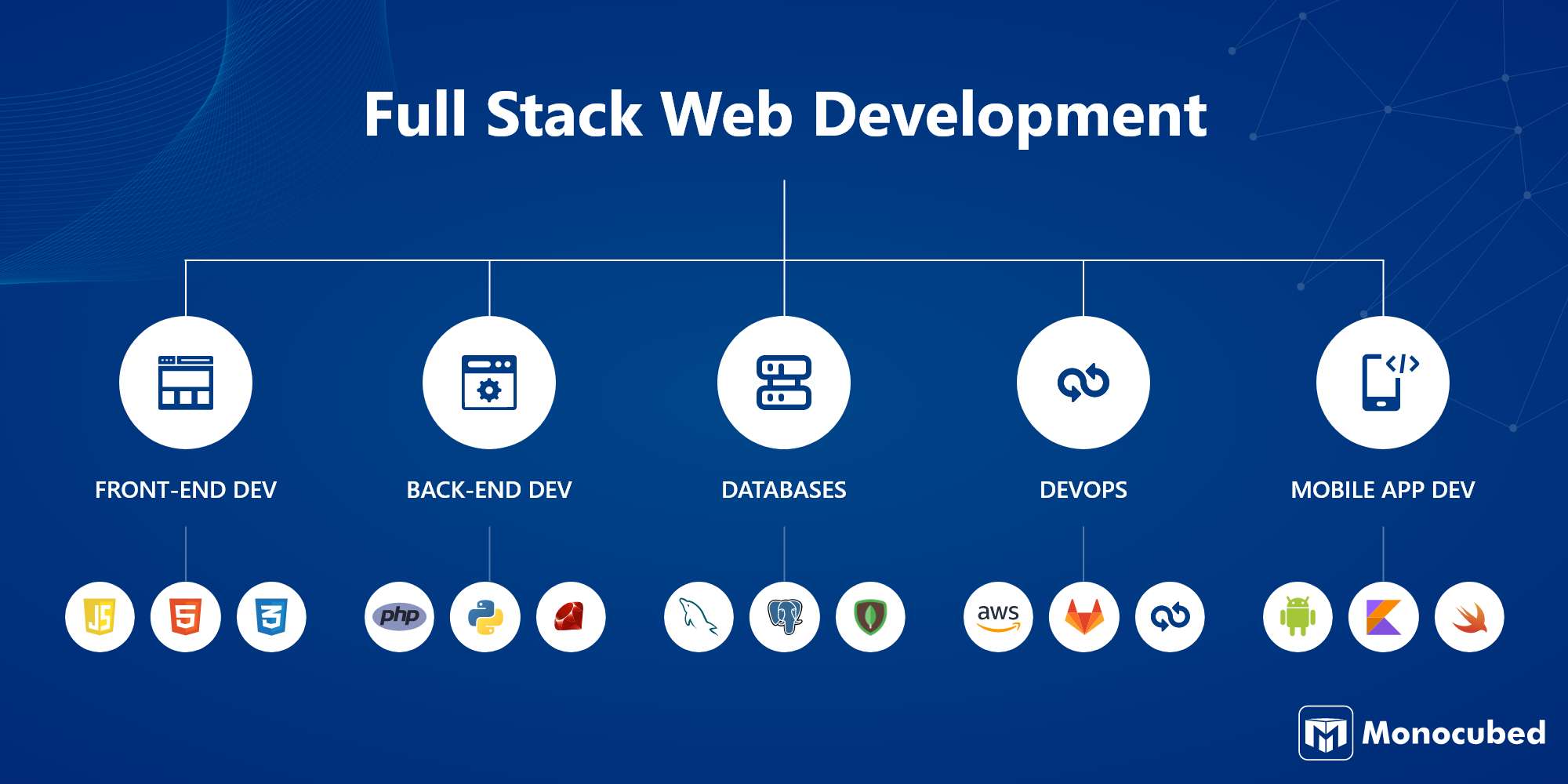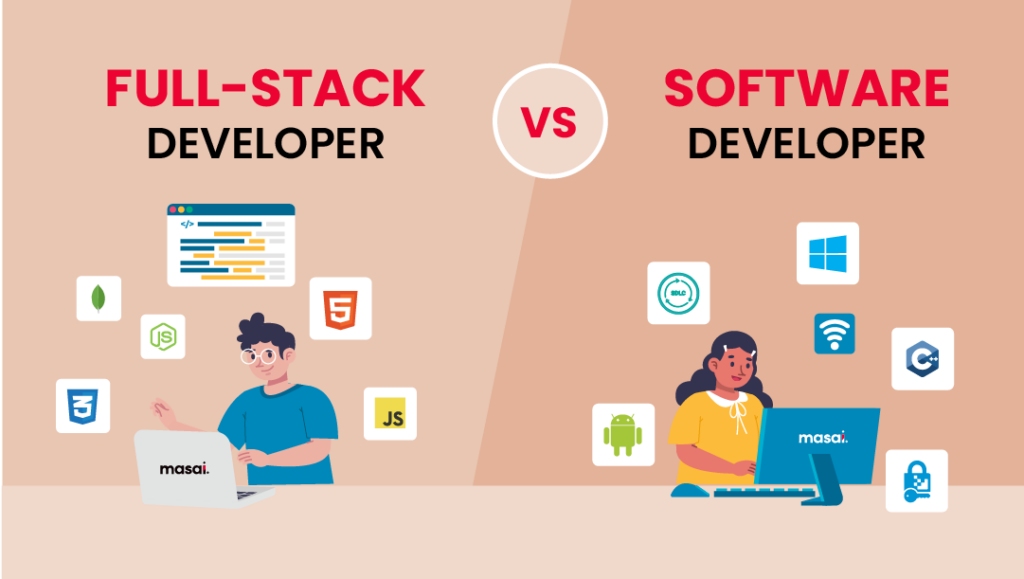Becoming a full stack web developer in 6 months is an ambitious yet achievable goal for anyone dedicated to learning web development. As a full stack developer, you will possess both front-end and back-end skills, allowing you to build and maintain complete web applications. The demand for full stack developers is growing rapidly in 2025, making it a lucrative and rewarding career path. However, mastering the necessary skills in such a short timeframe requires a structured approach and consistent effort.
In this blog, we will outline a roadmap to help you become a full stack web developer in 6 months, covering the essential tools, languages, and best practices for achieving your goal.
Month 1: Understand the Basics of Web Development
The first month of your journey should focus on building a strong foundation in web development. Begin by learning the core concepts and technologies that form the backbone of web development.
1. Learn HTML and CSS
HTML (Hypertext Markup Language) and CSS (Cascading Style Sheets) are essential for building the structure and styling of web pages. HTML is used to create the content and structure of your website, while CSS is responsible for its visual design. Start by building simple static web pages to understand how HTML and CSS work together.
- HTML Basics: Learn about tags, attributes, links, forms, and basic page layout.
- CSS Fundamentals: Understand the box model, positioning, flexbox, grid, and responsive design.
2. Get Comfortable with JavaScript
JavaScript is the scripting language that makes your websites interactive and dynamic. It is an essential tool for full stack web development. Spend the first month mastering the basics of JavaScript, such as variables, data types, loops, conditionals, functions, and objects.
- Focus on DOM Manipulation: Learn how to interact with HTML elements using JavaScript.
- Work with Events: Understand how to respond to user interactions like clicks and key presses.
Month 2: Dive Deeper into Front-End Development
In the second month, focus on expanding your front-end development knowledge. This will give you the skills to create sophisticated and dynamic user interfaces.
1. Master JavaScript Frameworks
Modern JavaScript frameworks and libraries simplify web development by providing reusable components and tools. Two popular frameworks to learn are React and Vue.js.
- React: Learn how to create components, handle state management, and work with the React ecosystem.
- Vue.js: Alternatively, you can focus on Vue.js if you’re looking for a simpler learning curve.
2. Learn Version Control (Git)
Version control systems like Git are essential for managing code and collaborating with other developers. Learn how to create repositories, track changes, and work with branches on platforms like GitHub.
- Basic Git Commands: Learn how to commit changes, push code to remote repositories, and merge branches.
Month 3: Start with Back-End Development
By the third month, it’s time to shift your focus to the back-end, where you will work with servers, databases, and APIs to handle data processing and user requests.
1. Learn Node.js
Node.js is a popular JavaScript runtime that allows you to build back-end applications using JavaScript. It’s ideal for full stack developers who want to use the same language for both front-end and back-end development.
- Understand the Event Loop: Learn how Node.js handles asynchronous operations.
- Express.js Framework: Familiarize yourself with Express.js, a minimal web framework for building RESTful APIs.
2. Get Comfortable with Databases
Every web application requires a database to store and manage data. As a full stack developer, you’ll need to work with both relational (SQL) and non-relational (NoSQL) databases.
NoSQL: Understand NoSQL databases like MongoDB, which store data in a flexible, document-oriented format.
SQL: Learn about relational databases like PostgreSQL or MySQL. Understand tables, queries, joins, and relationships.


Month 4: Build Full-Stack Applications
In the fourth month, you should focus on applying what you’ve learned by building full-stack applications. This will allow you to connect the front-end with the back-end, making you proficient in building complete, functional web applications.
1. Learn RESTful APIs
APIs (Application Programming Interfaces) allow the front-end and back-end of your application to communicate. RESTful APIs are a common way to structure these APIs.
- Learn how to build REST APIs using Node.js and Express.
- Understand how to send HTTP requests and handle responses (GET, POST, PUT, DELETE).
2. Build Projects
Start building simple full-stack projects that integrate both the front-end and back-end. For example, you could build a blog platform, a to-do list app, or a simple e-commerce site.
- Example Project: Create a note-taking app that allows users to add, update, and delete notes. Use React for the front-end and Node.js with Express for the back-end.
Month 5: Learn Advanced Topics and Tools
At this stage, focus on expanding your skills by learning advanced topics and tools commonly used in the industry.
1. Authentication and Authorization
Implementing user authentication and authorization is critical for most web applications. Learn how to manage user sessions and protect sensitive data.
- Learn how to implement JWT (JSON Web Tokens) or OAuth for user authentication.
- Understand role-based access control (RBAC).
2. Testing
Write tests to ensure that your applications work as expected. Learn how to use testing frameworks like Jest or Mocha to write unit tests for both the front-end and back-end.
- Front-End Testing: Learn how to use tools like Jest or React Testing Library.
- Back-End Testing: Use Mocha and Chai for testing Node.js applications.
Month 6: Polish and Deploy Your Projects
In the final month, focus on polishing your skills and deploying your applications to the web.
1. Deployment
Learn how to deploy your applications using cloud platforms like Heroku, AWS, or Netlify. Understand how to deploy both the front-end and back-end, configure databases, and manage domains.
- Deploy a full-stack application to a platform like Heroku.
- Set up environment variables and configure production settings.
2. Build a Portfolio
Build a strong portfolio showcasing your full-stack projects. This is essential for job hunting and demonstrating your skills to potential employers.
- Create a personal website or portfolio to display your projects.
- Use GitHub to host your code and projects.
Conclusion
Becoming a full stack web developer in 6 months is challenging but entirely feasible with the right dedication and focus. By following a structured learning path, you can master both front-end and back-end development, giving you the ability to build complete web applications.
Stay consistent with your learning, build real-world projects, and engage with the coding community to improve your skills. By the end of these 6 months, you’ll be ready to pursue full stack web development opportunities and begin your career in this exciting field.

